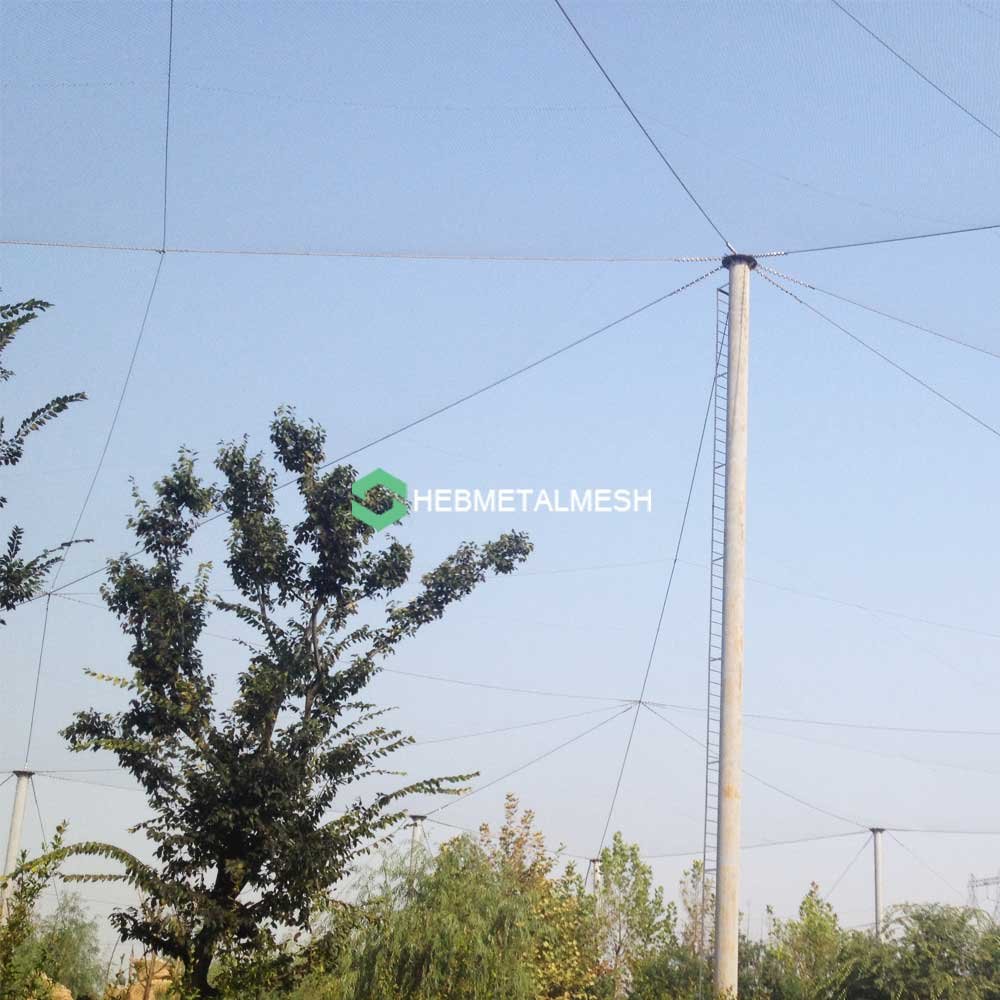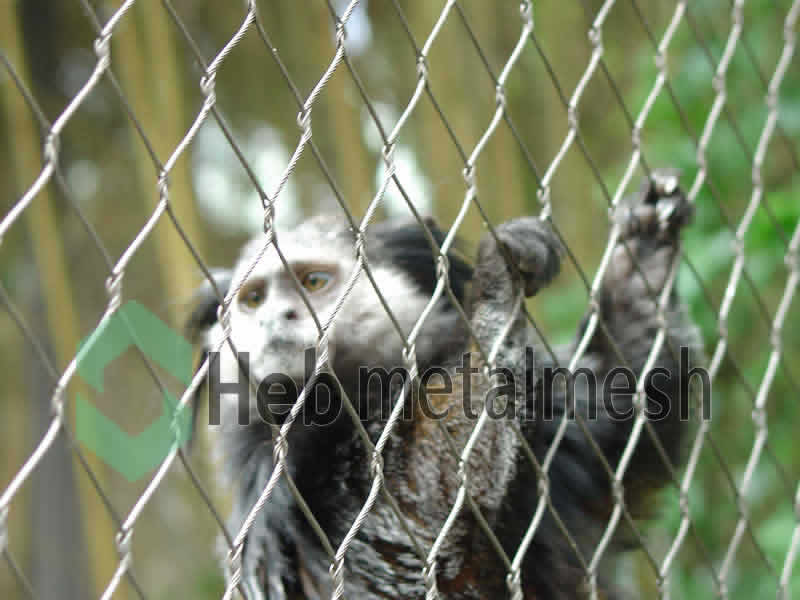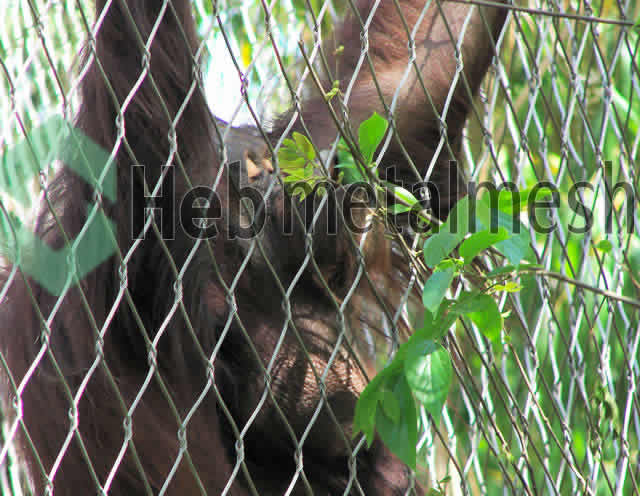Introduction to Bird Netting Rolls
Bird netting rolls are specialized materials designed to deter birds from accessing specific areas. These netting solutions are typically composed of durable, lightweight polyethylene or nylon, allowing them to withstand various weather conditions while providing effective protection. The primary purpose of bird netting rolls is to create a barrier that prevents birds from landing or nesting in unwanted places, thus avoiding potential damages to property and reducing health risks associated with bird droppings.
Various species of birds, such as pigeons, sparrows, and starlings, can often become nuisances in urban and rural environments alike. These birds can cause significant harm to crops, gardens, and building exteriors, to name a few. They are known to peck at fruits and vegetables, create unsightly messes, and even pose structural damages to buildings through their nesting habits. Given their propensity to congregate in large numbers, it becomes imperative for property owners to implement an effective solution to manage bird populations and protect their properties.
Utilizing a bird netting roll serves as an efficient and humane method of bird control. Unlike other less desirable methods, such as traps or chemicals, netting provides a deterrent that discourages birds from settling in targeted areas without harming them. The versatility of bird netting makes it suitable for various applications, from agricultural fields to residential backyards. By understanding the threatened habitats of birds and recognizing the advantages of deploying bird netting, property owners can more effectively safeguard their spaces from these feathered intruders. In the following sections, we will delve deeper into the different types of bird netting available and the specific benefits that they offer.
Types of Bird Netting Rolls
Bird netting rolls are essential tools designed to safeguard various spaces from the encroachment of birds. These products vary significantly in terms of material, size, and specific applications, catering to different needs in both residential and commercial environments. Understanding the different types of bird netting rolls available can aid in making informed choices for effective pest control.
One of the most common types of bird netting is made from polyethylene, a lightweight and durable plastic material. This netting is often used in agricultural settings to protect crops from being pecked or damaged by birds. The polyethylene bird netting roll typically comes in various sizes and mesh openings, allowing for flexibility in coverage. Additionally, its UV-treated version offers enhanced longevity when exposed to sunlight.
An alternative to polyethylene netting is nylon bird netting, which is known for its strength and resiliency. This type of netting is particularly useful in commercial and industrial applications, such as warehouses or rooftops, where heavy-duty protection is required. Nylon bird netting rolls are available in different thicknesses, providing options based on the specific level of protection desired.
For those needing to deter larger birds, such as pigeons, heavier gauge bird netting rolls are available. These nets typically feature reinforced edges and thicker materials to withstand stronger forces. On the other hand, lightweight bird netting options can be ideal for residential gardens or balconies where minimal disturbance to the aesthetic is sought while keeping unwanted feathered visitors at bay.
Understanding the functional characteristics of these various types of bird netting rolls is essential for selecting the appropriate solution for your needs. Whether for protecting crops, preventing nesting, or securing a commercial space, there is a suitable netting option available to effectively address the challenges posed by unwanted birds.
Benefits of Using Bird Netting Rolls
Bird netting rolls have increasingly become a favored solution for individuals and businesses aiming to protect their spaces from unwanted avian visitors. One of the primary advantages of using bird netting is its cost-effectiveness. Compared to other methods of bird control, such as traps or professional bird removal services, bird netting rolls present a more economical approach, preventing the need for ongoing expenses associated with damage repairs and pest control.
Furthermore, the durability of bird netting rolls is a significant benefit. Manufactured from high-quality materials such as polypropylene or polyethylene, bird netting is designed to withstand harsh weather conditions, making it suitable for both indoor and outdoor applications. This resilience ensures that once installed, the netting can provide long-term protection without the necessity for frequent replacements.
From an environmental standpoint, bird netting rolls are a responsible choice. Unlike chemical repellents that may pose risks to both wildlife and the ecosystem, bird netting offers a physical barrier that prevents birds from accessing certain areas while allowing other wildlife, such as beneficial insects, to thrive. Many users appreciate this eco-friendly option as it aligns with sustainable practices in pest management.
The ease of installation associated with bird netting rolls cannot be overlooked. With user-friendly designs, individuals can often install the netting themselves, minimizing labor costs and time commitments. Simple guidelines are available to assist users in effectively securing the netting to various structures, ensuring minimal effort is required.
Moreover, the effectiveness of bird netting should not be underestimated. By creating an impenetrable barrier, these rolls serve as a practical solution for a variety of scenarios, from safeguarding crops in agricultural settings to protecting patios and outdoor venues from droppings and potential damage. Numerous testimonials illustrate the satisfaction of users who have effectively reduced bird-related nuisances through the strategic use of bird netting rolls.
How to Choose the Right Bird Netting Roll
Choosing the appropriate bird netting roll is crucial for effectively deterring unwanted avian visitors. The selection process should begin with an assessment of the specific type of birds you aim to exclude. Different species present unique challenges; for example, larger birds such as crows or pigeons may require a sturdier netting option compared to smaller sparrows or finches. A thorough understanding of the target bird species will guide you in selecting netting that can withstand specific behaviors, such as pecking or nesting.
Next, consider the environment where the bird netting roll will be installed. Urban areas may necessitate different netting materials compared to rural settings, as urban environments often present more obstacles, such as wind and urban debris. Assessing environmental factors will assist in preventing potential damage to the netting. Additionally, the installation area’s proximity to vegetation and feeders can influence bird activity; thus, tailor your netting choice accordingly.
The dimensions and mesh density of the bird netting roll are essential parameters to consider as well. Select a size that sufficiently covers the targeted area with minimal gaps that could allow birds to enter. Mesh density is equally important; finer mesh may effectively deter smaller birds but may not withstand larger species. Conversely, a coarser mesh can provide adequate strength but might be less effective against tiny birds. Balancing these factors will optimize your bird deterrent strategy.
Finally, budgetary considerations will inevitably influence your decision. Bird netting rolls are available at various price points, depending on material quality and durability. It is essential to choose a netting solution that meets your operational needs without compromising on effectiveness. By evaluating these factors, you can confidently select the ideal bird netting roll, ensuring that your space remains protected against unwanted feathered pests.
Installation Guide for Bird Netting Rolls
Successfully installing a bird netting roll requires careful planning and execution to ensure it serves its purpose effectively. Start by gathering the necessary materials. You will need a durable bird netting roll, zip ties or net clips for securing the net, and a suitable tool for cutting the netting, such as scissors or a utility knife. If your installation demands it, consider having stakes or poles for added support, especially for larger areas.
Before commencing installation, it is crucial to assess the space where the netting will be applied. Identify the areas that require protection and take precise measurements to determine the amount of bird netting roll needed. Opt for a lightweight netting material that fits your specific application. If you are protecting fruit trees, for instance, select a net that is small enough to keep birds out while allowing sunlight and rain to reach the plants.
Advancing to the installation process, begin by securing one side of the netting to a fixed structure. This could be a fence, wall, or tree trunk. Use zip ties or net clips to attach the net securely, ensuring there are no gaps through which birds can enter. Gradually unroll the netting, pulling it taut as you go, and fasten it along the perimeter of your chosen area. If you need to cover a larger space, consider overlapping additional pieces of the bird netting roll at the seams to prevent gaps.
In the event that you encounter challenges during installation, such as fraying or tearing of the netting, ensure you have additional materials on hand for quick repairs. It’s also wise to conduct a final inspection upon completion, verifying that the netting remains secure and that no openings exist that may allow birds access to your space. Proper installation will greatly enhance the effectiveness of your bird netting roll.
Maintaining Bird Netting Rolls
To ensure the long-lasting effectiveness of bird netting rolls, regular maintenance is essential. This involves routine cleaning, inspection, and timely repairs or replacements when necessary. Over time, elements like weather, UV exposure, and physical damage can impact the integrity of the netting, making these maintenance practices pivotal in extending its lifespan.
Firstly, cleaning your bird netting should be done periodically. Dust, debris, and organic matter can accumulate on the surface, reducing its effectiveness as a barrier against birds. Using a soft brush or cloth, gently wipe the surfaces to remove any build-up. For deeper cleaning, a mild soap solution can be applied; however, it is important to avoid harsh chemicals that could degrade the material. Rinse thoroughly with water to remove soap residues, and allow the netting to dry completely before re-installing it.
Routine inspections also play a critical role in maintenance. It is advisable to check the bird netting roll for signs of wear and tear at least once a month, especially after severe weather events. Look for any holes, tears, or frayed edges that may compromise its protective capabilities. If any damage is found, assess the extent. Small holes can often be repaired with durable tape or patches, while larger tears or widespread deterioration may warrant a full replacement of the netting.
Finally, when to replace bird netting rolls depends on the frequency of inspections and the environmental conditions they are exposed to. If repairs become too frequent or if the material shows excessive signs of aging, it might be more cost-effective to invest in new bird netting. By following these maintenance tips, you can ensure that your bird netting continues to serve its purpose effectively, providing a reliable shield against feathered pests.
Common Mistakes to Avoid with Bird Netting Rolls
When it comes to utilizing bird netting rolls for protecting outdoor spaces, a few common errors can undermine the effectiveness of this protective measure. One of the primary mistakes is incorrect installation. Proper installation is critical to ensure that the netting is taut and secure. Failing to adequately stretch the net over the intended area can lead to gaps, allowing birds to enter and negate the purpose of the netting. It is essential to follow the manufacturer’s instructions carefully and use the appropriate tools for installation to achieve a secure fit.
Another mistake frequently observed is selecting the inappropriate type of netting. Bird netting rolls are available in various materials and mesh sizes designed for different applications. For instance, using a net with too large a mesh size may allow smaller birds to ingress, while nets that are overly rigid might not conform to irregular spaces. It is vital to assess the specific needs of your area, considering factors such as the types of birds you are protecting against and your local environment, in order to choose the most suitable bird netting roll.
Additionally, neglecting maintenance is a significant oversight. Bird netting can suffer from wear and tear over time, particularly if exposed to harsh weather conditions. Regular inspection is necessary to identify any tears or weaknesses in the netting that could facilitate bird entry. Furthermore, debris accumulation can hinder the functionality of the netting, necessitating periodic cleaning to ensure unhindered protection. By addressing these mistakes, individuals can significantly enhance the efficacy of bird netting rolls and create a more effective barrier against feathered pests.
Success Stories: Bird Netting in Action
Across various sectors, the implementation of bird netting rolls has resulted in significant improvements in managing bird-related challenges. These success stories illustrate how effective bird netting solutions can be across agricultural settings, residential spaces, and commercial properties.
In agriculture, farmers have long faced issues with birds consuming crops, leading to substantial financial losses. One notable example is a vineyard in California that successfully utilized bird netting rolls to protect their grape harvest. By installing netting over their vines, the vineyard was able to reduce bird damage by over 80%. This not only safeguarded their produce but also improved the overall quality of their grapes, ultimately leading to a more lucrative harvest. The use of bird netting allowed the vineyard to attract new customers, proving the efficacy of this protective measure in agriculture.
Similarly, residential areas have benefitted from bird netting. A home in a suburban neighborhood struggled with pigeons nesting on its rooftop, causing debris and health concerns. The homeowner opted for a bird netting roll to create a barrier against these unwelcome guests. After the installation, the problem was resolved; the pigeons found new nesting grounds, while the home remained clean and free from bird droppings. This case emphasizes the importance of bird netting solutions in maintaining cleanliness and safety within residential spaces.
Commercial properties have also seen remarkable results through the clever application of bird netting. A local warehouse experienced issues with birds roosting and creating a mess in their loading docks. By applying bird netting rolls to block access points, the warehouse successfully eliminated the issue, allowing them to maintain a clean and professional appearance. Not only did this benefit daily operations, but it also enhanced customer perception of the business.
These narratives exemplify the practicality and versatility of bird netting rolls across different sectors, inspiring potential users to consider integrating netting solutions into their own environments.
Conclusion and Final Thoughts
In our exploration of bird netting rolls, we have covered essential aspects that underline their effectiveness as a solution for managing unwanted bird populations. Throughout this article, we discussed the various types of bird netting available, highlighting the advantages of each option. Bird netting rolls come in multiple sizes and materials, allowing users to select a product tailored to their specific needs, ensuring that both gardens and commercial spaces can benefit from their protective capabilities.
A significant point made is that the implementation of bird netting acts as a deterrent for various feathered pests. These nets serve to protect crops, property, and other critical areas from damage caused by birds that may consume fruit, seeds, or create unsightly messes. The strategic use of a bird netting roll provides a non-lethal approach to management, which is particularly important for those who maintain ecological balance in their gardens or open spaces.
Furthermore, we discussed the installation process, which is relatively straightforward, ensuring that even novice users can effectively utilize bird netting rolls. Proper installation is crucial to maximize their protective properties and to ensure long-term functionality. Regular maintenance and inspection of the netting also contribute significantly to its durability and efficiency. Overall, it can be asserted that investing in quality bird netting is a proactive measure against disturbance and damage caused by avian pests.
Ultimately, as we conclude this guide, it is evident that bird netting rolls are a valuable investment for anyone facing challenges related to unwanted birds. By implementing these protective features, readers are encouraged to take charge of their spaces and significantly reduce the risks associated with feathered invaders.


